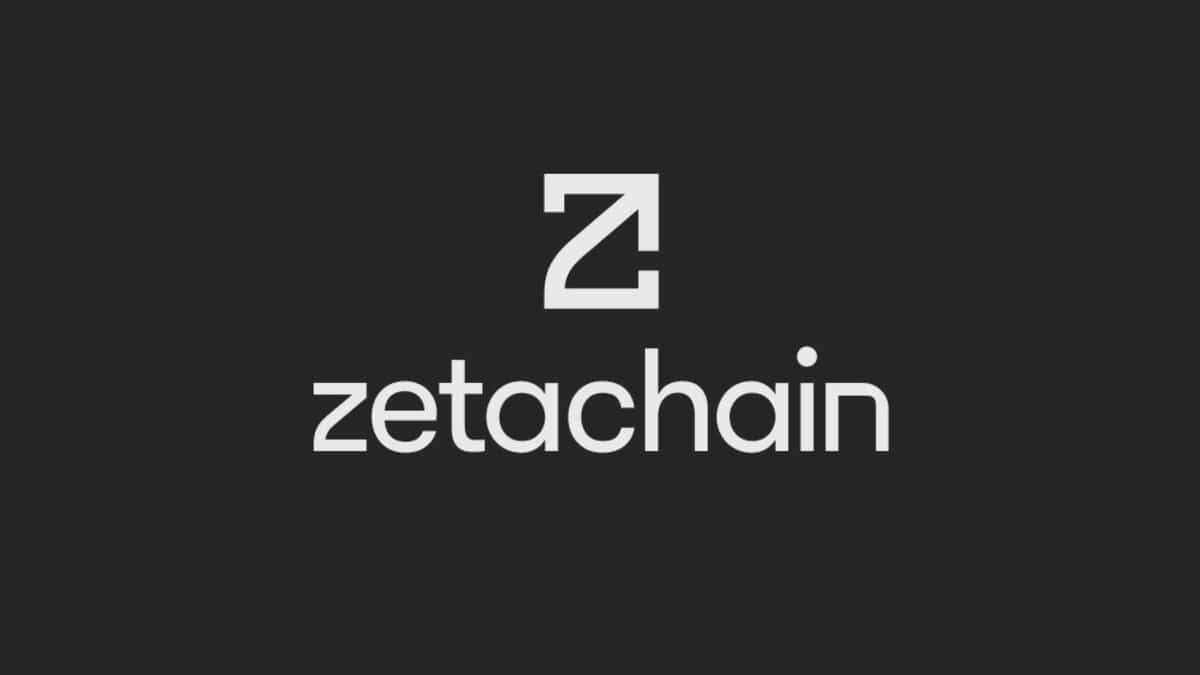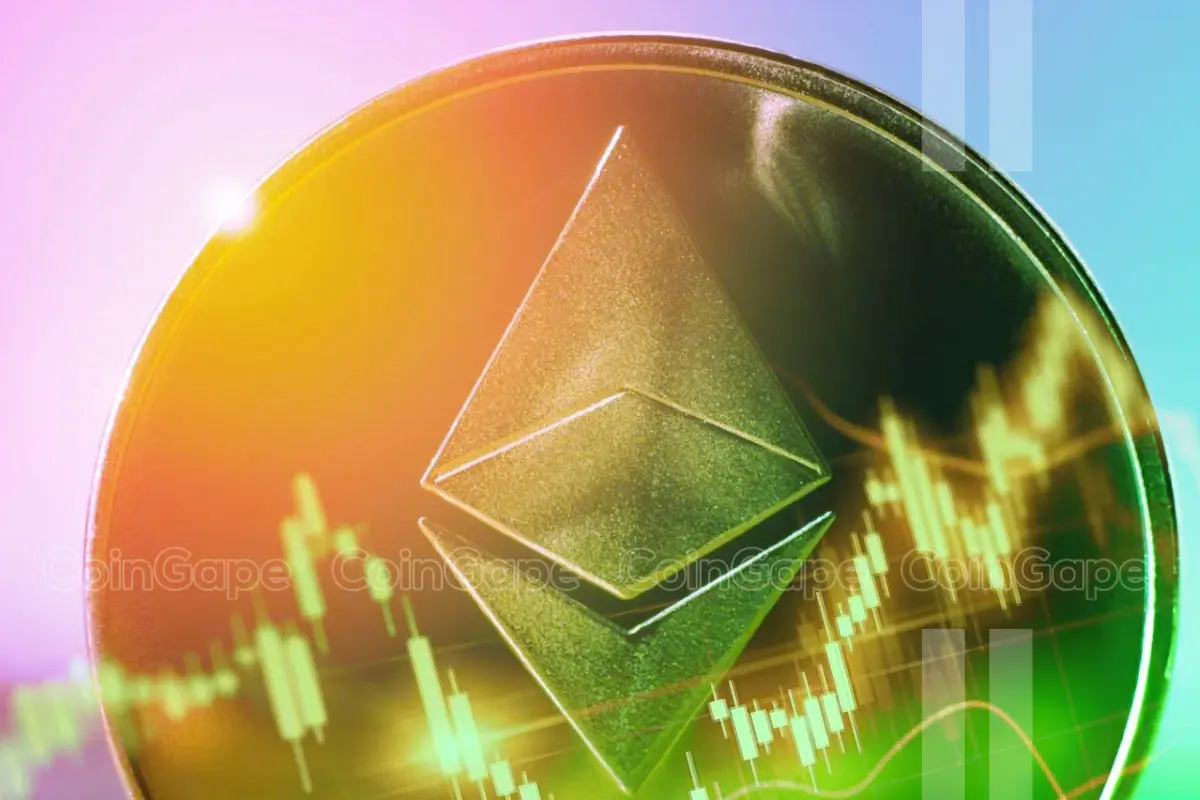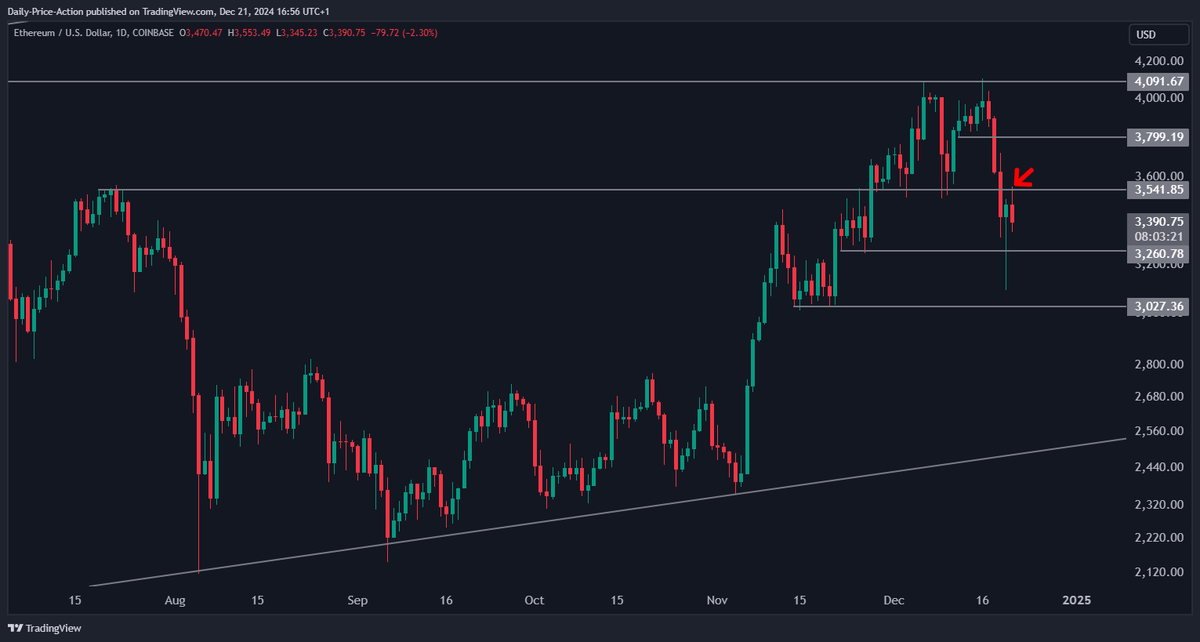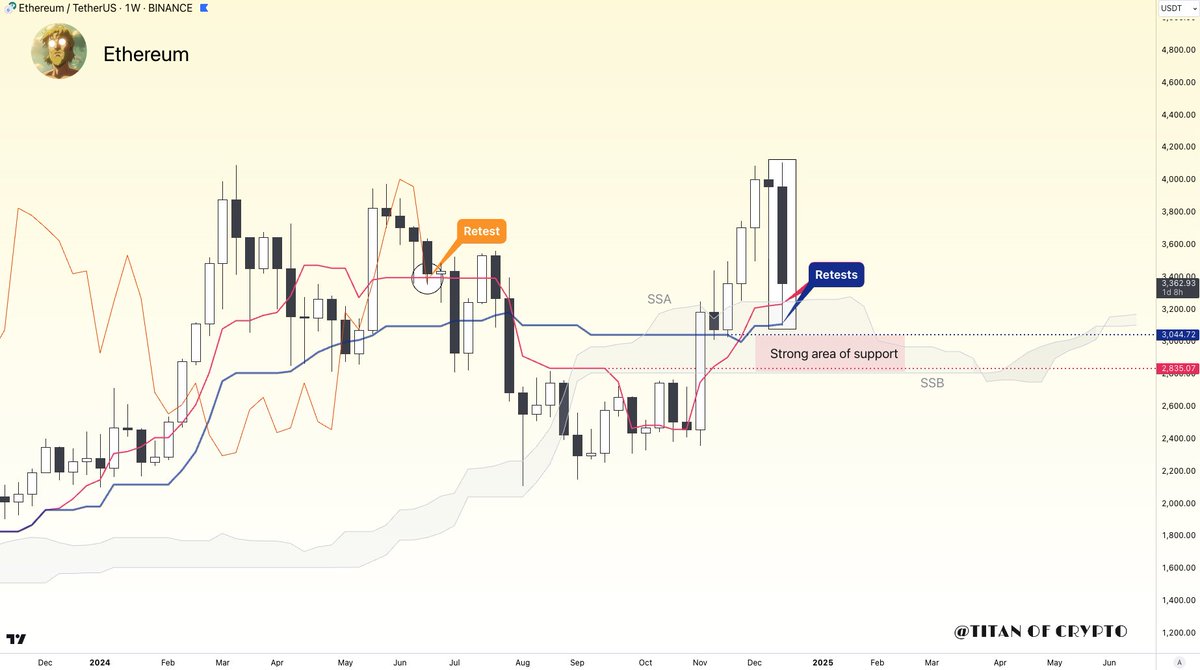24/7 Cryptocurrency News
ZetaChain Launches Gateway, Targets Devs and Users
Published
5 months agoon
By
admin
ZetaChain has announced Gateway, a new upgrade that allows users to access apps from multiple networks supported by the platform. This marks another step towards blockchain interoperability and improving its easy access to developers and users. The network’s Universal EVM Will directly become more seamless due to the integration.
ZetaChain Rolls Out Gateway
In a July 18 release, ZetaChain disclosed Gateway and Localnet to boost interoperability and allow access from new chains supported by the network including Bitcoin. This update allows app on the its Universal EVM to connect without switching networks by utilizing the ZRC 20 standard.
Announcing Gateway, a new upgrade that lets users access apps from any new chain supported by ZetaChain including Bitcoin, while developers only need to deploy once. Gateway plays a significant role in the ZetaChain 2.0 upgrades. Learn more: https://t.co/HFnfD83BE9
— ZetaChain (@zetablockchain) July 18, 2024
Gateway integrations revamped the smart contract interface with externally owned accounts (EOAs) allowed to send tokens and call Universal Apps in a unified API. This fosters the hub-and-spoke model rather than the previous point-to-point messaging which was marred with complexities without extending to non-smart chains.
“The hub-and-spoke model offered by Universal Apps lets you manage native foreign assets and data from a single place. Rather, point-to-point messaging between contracts on different chains is complex, difficult to scale, and cannot extend to non-smart chains such as Bitcoin.”
Furthermore, Gateway unlocks multi-step operations through a single click. Users can now send Bitcoin to a Universal App on the network or in a USDC transfer to Ethereum. ”For example, a Bitcoin user can interact with a Universal App to send USDC to a recipient on Ethereum. An Ethereum user can buy an NFT on ZetaChain and send it to their account on the BNB chain all in one step,” the platform added.
New Era of Interoperability
According to the release, devs and users will gain from easy maintenance, better scalability, chain abstraction, and unified liquidity. Particularly linear scalability will come in handy towards a future-proof blockchain interoperability. Unified liquidity makes cross-chain transcription efficient while reducing fragmentation in the system. Chain abstraction connects with multiple networks without multiple management.
Also Read: OpenAI Launches GPT-40 Mini As Latest AI Breakthrough
David is a finance news contributor with 4 years of experience in Blockchain Technology and Cryptocurrencies. He is interested in learning about emerging technologies and has an eye for breaking news. Staying updated with trends, David reported in several niches including regulation, partnerships, crypto assets, stocks, NFTs, etc. Away from the financial markets, David goes cycling and horse riding.
The presented content may include the personal opinion of the author and is subject to market condition. Do your market research before investing in cryptocurrencies. The author or the publication does not hold any responsibility for your personal financial loss.
Source link
You may like


XRP’s $5, $10 goals are trending, but this altcoin with 7,400% potential takes the spotlight


CryptoQuant Hails Binance Reserve Amid High Leverage Trading


Trump Picks Bo Hines to Lead Presidential Crypto Council


The introduction of Hydra could see Cardano surpass Ethereum with 100,000 TPS


Top 4 Altcoins to Hold Before 2025 Alt Season


DeFi Protocol Usual’s Surge Catapults Hashnote’s Tokenized Treasury Over BlackRock’s BUIDL
24/7 Cryptocurrency News
CryptoQuant Hails Binance Reserve Amid High Leverage Trading
Published
3 hours agoon
December 23, 2024By
admin
Crypto analytics platform CryptoQuant has conducted a deep dive research into Binance and other centralized exchanges to uncover how susceptible they are to liquidity risks. With the crypto ecosystem trading at a very high premium, exchanges require high liquidity to meet growing demands. Of its findings, CryptoQuant singles out Binance and OKX as platforms to watch out for.
What Makes Binance Stand Out from Centralized Exchanges?
According to CryptoQuant, it analyzed the leverage levels of top centralized exchanges. It conducted this exercise to evaluate their liquidity, default risk and how crypto reserves backs trading activity. The analysis also employs leverage ratio calculation to estimate trader’s exposures.
Based on this, the analytics firm singled out Binance as an exchange with robust reserves. The trading platform maintains this reserve despite the significant growth in open interest this year. This is signficant, considering how Binance Futures list new tokens to fuel this expansion including Solana’s Fartcoin.
“Its reserves in Bitcoin, Ethereum, and USDT comfortably exceed its open interest. Binance also reported the lowest and most stable leverage ratio among major exchanges, with a ratio of 12.8 in December 2023, rising slightly to 13.5 in December 2024,” the CryptoQaunt report reads.
As pointed out, this stability and the 2.6x expansion in Bitcoin open interest on the platform from $4.45 billion to $11.64 billion implies that the exchange can handle unexpected liquidations.
Centralized Exchange Leverage Risk on the Midst of the Upcoming Bull Run
We assess the leverage levels of various crypto exchanges to evaluate their liquidity, default risk, and the extent to which their perpetual futures trading activity is backed by their crypto reserves.
Our… pic.twitter.com/NAadJSAlVT
— CryptoQuant.com (@cryptoquant_com) December 21, 2024
As the report hinted, smaller exchanges like OKX also maintain low leverage ratios.
Centralized Exchanges and Avoiding the FTX Saga
In addition to the Binance spotlight, CryptoQuant also mentioned Gate io, Bybit, and Deribit. However, the report noted that these trading platforms have the highest leverage ratios in the market pegged at 106, 86, and 32, respectively. Notably, this figures show open interests for Bitcoin and Ethereum is higher than the existing reserves available on these centralized exchanges.
The analysis concluded by flagging the impact of high leverage trading, one of the major causes of the FTX Derivatives Exchange collapse. This report serves as an eye opener that can help traders manage risk per platforms they trade on.
Meanwhile, FTX is at the tail end of its bankruptcy proceedings. As Coingape reported earlier, FTX has set January 3 as the date to commence creditor repayment.
Godfrey Benjamin
Benjamin Godfrey is a blockchain enthusiast and journalists who relish writing about the real life applications of blockchain technology and innovations to drive general acceptance and worldwide integration of the emerging technology. His desires to educate people about cryptocurrencies inspires his contributions to renowned blockchain based media and sites. Benjamin Godfrey is a lover of sports and agriculture.
Disclaimer: The presented content may include the personal opinion of the author and is subject to market condition. Do your market research before investing in cryptocurrencies. The author or the publication does not hold any responsibility for your personal financial loss.
Source link
24/7 Cryptocurrency News
Ripple Transfers 90M Coins, What’s Happening?
Published
12 hours agoon
December 22, 2024By
admin
XRP has regained its footing above the $2 support level, fueled by significant whale activity. In only 30 minutes, 90 tokens, worth approximately $202,5 million, were transferred to unknown wallets.
Ripple has emerged as one of the top post-election performers, quadrupling in value since November 5. This impressive rally, alongside gains in other cryptocurrencies, has spotlighted digital assets and fueled speculation about their potential trajectory heading into 2025.
XRP Whales Make Massive Moves, Sparking Price Speculation
XRP has regained its footing above the $2 support level, fueled by significant whale activity. In only 30 minutes, 90 tokens, worth approximately $202,5 million, were transferred to unknown wallets.
The unusually large withdrawals, flagged by Whale Alert, have sparked heightened interest among investors and increased speculation about the token’s future price movement.
🚨 🚨 🚨 🚨 40,000,000 #XRP (89,678,944 USD) transferred from #Ripple to unknown wallethttps://t.co/YmHOFWz1q9
— Whale Alert (@whale_alert) December 21, 2024
Whale Alert reveals that the recent XRP transfers consisted of two significant transactions. The largest involved 50 million tokens, valued at approximately $112.5 million, moved to a newly created wallet. The second transaction saw 40 million tokens worth $90 million sent to a recently activated address.
🚨 🚨 🚨 🚨 🚨 50,000,000 #XRP (111,697,462 USD) transferred from #Ripple to unknown wallethttps://t.co/nWwkUGOhWA
— Whale Alert (@whale_alert) December 21, 2024
The destination wallets are not linked to any known cryptocurrency exchanges, leading investors to speculate that high-net-worth individuals or institutional investors may be accumulating Ripple. This has fueled expectations of further price movement. Also, recently, renowned hedge fund manager Scott Melker has revealed that former President Donald Trump is actively accumulating XRP and HBAR tokens.
Crypto analysts think that large transfers to exchanges from unknown wallets are often a bullish indicator. This is a signal that the whales-the major holders-are moving their holdings to cold storage, which typically reflects a long strategy, rather than short-term selling. This can set up a positive outlook for the cryptocurrency’s price. However, the reversal situation results usually with reversal outcome so it’s interesting the price is still on the rise.
This development comes as a US appeals court announces the filing deadlines for the opening and reply briefs by Ripple and its CEO, Brad Garlinghouse.
Holding Steady at Key Support, Awaiting Next Move
XRP and the broader cryptocurrency market have remained relatively flat in recent days, with the token holding critical support levels that could spark a renewed uptrend. At the time of writing, XRP was trading at $2.25, reflecting a slight 0.35% rise over the past 24 hours.
If the bulls stay in control, Ripple may continue its upside, having key resistances between $3.62 and $4.30. A break above such a range could send prices towards $5.73. At 46, though, the RSI rests, showing that sellers have still managed to be at the helm and cap upside momentum. Increased buying pressure will, thus, be critical for resuming the uptrend.
The Awesome Oscillator supports a bullish divergence with the histogram bars turning positive, yet still remaining in negative territory. This indeed would hint at a possible reversal, though additional buying pressure needs to be generated to confirm the uptrend.
The critical support level that traders should watch is at $2.20. A drop below this might set off panic and send prices lower.
In spite of this uncertainty and the possible bearishness of it all, this token is still attracting a great deal of interest from institutional investors-a fact that points to its long-term potential.
Teuta Franjkovic
Teuta is a seasoned writer and editor with over 15 years of expertise in macroeconomics, technology, and the crypto and blockchain sectors.
She began her career in 2005 as a lifestyle writer for *Cosmopolitan* before transitioning to business and economic reporting for renowned outlets like *Forbes* and *Bloomberg*.
Inspired by thought leaders like Don and Alex Tapscott and Laura Shin, Teuta embraced blockchain’s potential, viewing cryptocurrency as one of humanity’s most transformative innovations.
Since 2014, she has specialized in fintech, focusing on crypto, blockchain, NFTs, and Web3. Known for her strong collaboration and communication skills, Teuta also holds dual MAs in Political Science and Law.
Disclaimer: The presented content may include the personal opinion of the author and is subject to market condition. Do your market research before investing in cryptocurrencies. The author or the publication does not hold any responsibility for your personal financial loss.
Source link
24/7 Cryptocurrency News
How Low Will Ethereum Price Go By The End of December?
Published
15 hours agoon
December 22, 2024By
admin
In a recent analysis, crypto analyst Justin Bennett provided insights into how low the Ethereum price could drop by the end of December. This came as the analyst revealed that buyers need to step or ETH could enter next week with a bearish outlook.
How Low Ethereum Price Can Go By Year-End
In an X post, Justin Bennett suggested that the Ethereum price could drop to as low as $3,027 by year-end. While analyzing ETH’s daily chart, the analyst stated that ETH needs to flip $3,541 as support to turn bullish next week. If that doesn’t happen, he remarked there is a decent chance that Ethereum drops lower. The analyst’s accompanying chart showed that ETH could even drop to as low as $2,560 if it loses the $3,027 support level.
In an earlier X post, the crypto analyst stated that he is bullish on the Ethereum price based on the overall setup going into 2025. however, he believes that buyers still have work to do. He gave an example of how ETH needs to recover $3,540 on the weekly time frame to look bullish next week.
These buyers already look to be stepping in, as there has been an accumulation trend among ETH whales. Coingape reported that Ethereum whales are buying the dip as ETH eyes a quick rally to $4,000.
These whales have withdrawn 17,698 ETH worth $61.66 million from the crypto exchange Binance. Donald Trump’s World Liberty Financial has also gotten in on the act as the DeFi project accumulated more ETH on this dip.
Correction Might Be Over
In an X post, crypto analyst Titan of Crypto provided a more bullish outlook for the Ethereum price, stating that the correction might be over. The analyst made this statement based on his Ichimoku cloud analysis.
Titan of Crypto stated that Ethereum has retested both Tenkan and Kijun. He added that the worst-case scenario would be a retest of the Kumo Cloud SSB, Ichimoku’s strongest line.
According to a CoinGape market analysis, this might indeed be the last dip before ETH hits five digits. There are predictions that the Ethereum price could hit $15,937 by May 2025.
Boluwatife Adeyemi
Boluwatife Adeyemi is a well-experienced crypto news writer and editor who has covered topics that cut across DeFi, NFTs, smart contracts, and blockchain interoperability, among others. Boluwatife has a knack for simplifying the most technical concepts and making it easy for crypto newbies to understand. Away from writing, He is an avid basketball lover and a part-time degen.
Disclaimer: The presented content may include the personal opinion of the author and is subject to market condition. Do your market research before investing in cryptocurrencies. The author or the publication does not hold any responsibility for your personal financial loss.
Source link

XRP’s $5, $10 goals are trending, but this altcoin with 7,400% potential takes the spotlight

CryptoQuant Hails Binance Reserve Amid High Leverage Trading

Trump Picks Bo Hines to Lead Presidential Crypto Council

The introduction of Hydra could see Cardano surpass Ethereum with 100,000 TPS

Top 4 Altcoins to Hold Before 2025 Alt Season

DeFi Protocol Usual’s Surge Catapults Hashnote’s Tokenized Treasury Over BlackRock’s BUIDL

DOGE & SHIB holders embrace Lightchain AI for its growth and unique sports-crypto vision

Will Shiba Inu Price Hold Critical Support Amid Market Volatility?

Chainlink price double bottoms as whales accumulate

Ethereum Accumulation Address Holdings Surge By 60% In Five Months – Details

Ripple Transfers 90M Coins, What’s Happening?

Filecoin, Monero, and Lunex dominate smart investor portfolios

Bitwise CIO Matt Hougan Predicts Institutional Interest in Altcoins, Says 2025 the Year of Crypto Diversification

How Low Will Ethereum Price Go By The End of December?

Analyst says buying this altcoin at $0.15 could be as profitable as buying ETH at $0.66
182267361726451435

Why Did Trump Change His Mind on Bitcoin?

Top Crypto News Headlines of The Week

New U.S. president must bring clarity to crypto regulation, analyst says

Will XRP Price Defend $0.5 Support If SEC Decides to Appeal?

Bitcoin Open-Source Development Takes The Stage In Nashville

Ethereum, Solana touch key levels as Bitcoin spikes

Bitcoin 20% Surge In 3 Weeks Teases Record-Breaking Potential

Ethereum Crash A Buying Opportunity? This Whale Thinks So

Shiba Inu Price Slips 4% as 3500% Burn Rate Surge Fails to Halt Correction

Washington financial watchdog warns of scam involving fake crypto ‘professors’

‘Hamster Kombat’ Airdrop Delayed as Pre-Market Trading for Telegram Game Expands

Citigroup Executive Steps Down To Explore Crypto
Mostbet Güvenilir Mi – Casino Bonus 2024

NoOnes Bitcoin Philosophy: Everyone Eats
Trending

 3 months ago
3 months ago182267361726451435

 Donald Trump5 months ago
Donald Trump5 months agoWhy Did Trump Change His Mind on Bitcoin?

 24/7 Cryptocurrency News4 months ago
24/7 Cryptocurrency News4 months agoTop Crypto News Headlines of The Week

 News4 months ago
News4 months agoNew U.S. president must bring clarity to crypto regulation, analyst says

 Price analysis4 months ago
Price analysis4 months agoWill XRP Price Defend $0.5 Support If SEC Decides to Appeal?

 Opinion5 months ago
Opinion5 months agoBitcoin Open-Source Development Takes The Stage In Nashville

 Bitcoin5 months ago
Bitcoin5 months agoEthereum, Solana touch key levels as Bitcoin spikes

 Bitcoin5 months ago
Bitcoin5 months agoBitcoin 20% Surge In 3 Weeks Teases Record-Breaking Potential





✓ Share: